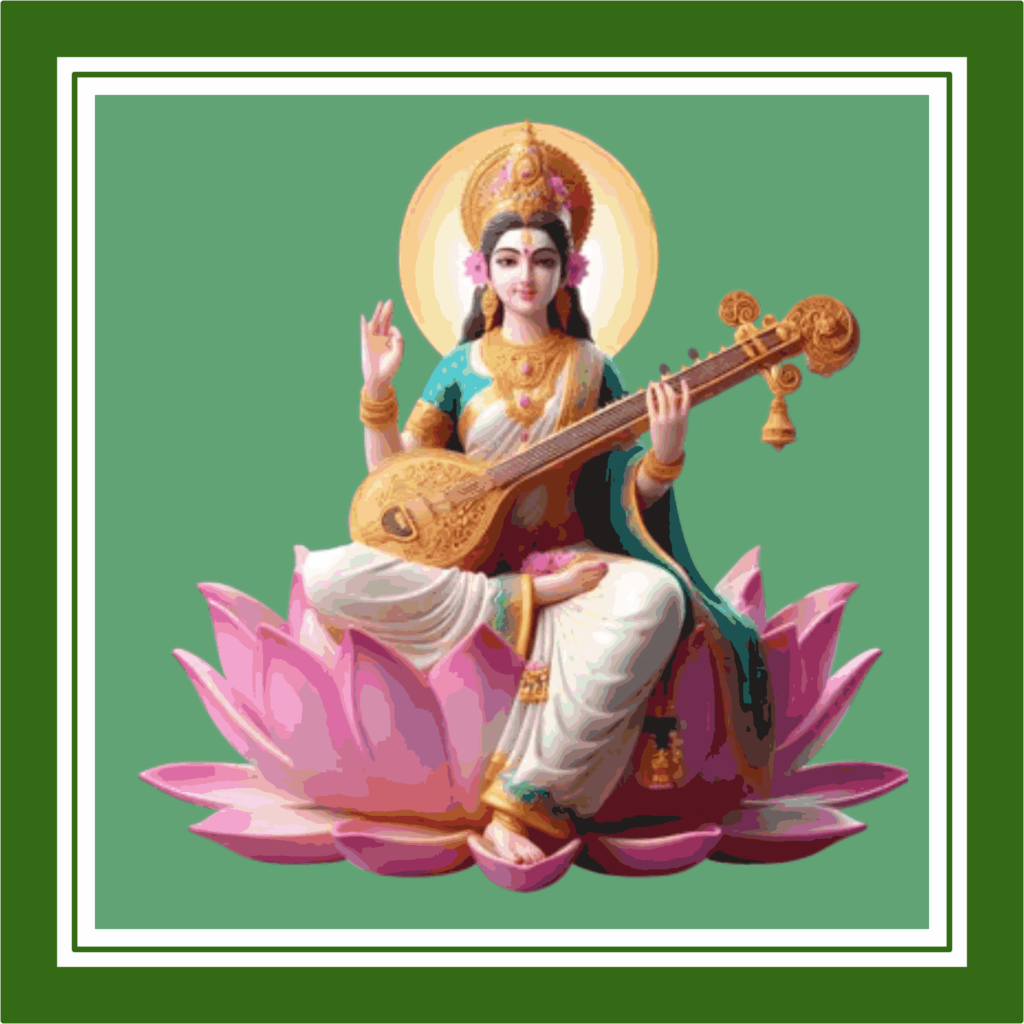Basant Panchami
A Celebration of Knowledge, Culture, and Renewal
Basant Panchami, also known as Saraswati Puja in many parts of India, is a vibrant and joyous festival celebrated predominantly in the Indian subcontinent. “Basnnt Panchami :Saraswati Puja 2025” Observed on the fifth day of the Hindu lunar month of Magha, which typically falls in late January or early February, this occasion heralds the arrival of spring and pays homage to Saraswati, the Hindu goddess of wisdom, learning, arts, and music. With its multifaceted significance, Basant Panchami seamlessly blends spiritual, cultural, and seasonal elements into a rich tapestry of tradition.
Historical and Mythological Origins
The celebration of Basant Panchami finds its roots in ancient Hindu traditions and mythology. According to Hindu beliefs, Goddess Saraswati emerged from the creator Lord Brahma’s mouth, symbolizing the birth of knowledge and wisdom. She is often depicted holding a veena (a musical instrument), a book, a rosary, and a pot of water, representing art, learning, spirituality, and purity, respectively.
One popular legend associated with Basant Panchami involves the poet Kalidasa. It is said that Kalidasa, who was initially an unlearned and dejected man, was blessed by Goddess Saraswati on this day, transforming him into one of the greatest Sanskrit poets and playwrights of all time. This story underscores the goddess’s role as a source of enlightenment and intellectual prowess. Basant Panchami
In another interpretation, Basant Panchami marks the beginning of the harvest season and the end of winter, linking the festival to agrarian practices and nature’s cycles.
Spiritual Significance
At its core, Basant Panchami is a day to seek the blessings of Goddess Saraswati. Devotees, especially students, artists, and scholars, perform Saraswati Puja to invoke her guidance and express gratitude for her blessings. Homes and educational institutions are adorned with idols or images of the goddess, and offerings of fruits, sweets, and yellow flowers are made. Yellow, symbolizing energy, knowledge, and prosperity, is the festival’s dominant color.
The day is also considered highly auspicious for initiating children into the world of learning. This ceremony, known as “Vidyarambham” or “Aksharabhyasam,” involves writing the first letters of the alphabet, signifying the beginning of formal education. Schools, colleges, and universities often hold special ceremonies to honor Saraswati, reinforcing the value of education and intellectual growth.
Cultural Traditions and Celebrations
Basant Panchami celebrations vary across regions, reflecting India’s rich cultural diversity. However, certain customs remain universal. The color yellow, which is associated with spring, energy, and prosperity, takes center stage. People wear yellow attire, prepare yellow-colored dishes such as saffron rice or sweetened rice (Kesari Bhaat), and decorate their homes with yellow flowers.
In Northern India
In Punjab and Haryana, Basant Panchami is closely linked to the tradition of kite flying. The skies come alive with colorful kites, symbolizing joy and freedom. It is a day of community celebration, with families gathering on rooftops to participate in friendly kite-flying competitions. Traditional music, dance, and feasting further enhance the festive atmosphere. Basant Panchami
In Eastern India
In West Bengal, Odisha, and Assam, the festival is synonymous with Saraswati Puja. Students place their books, musical instruments, and art supplies near the goddess’s idol, seeking her blessings for academic and creative success. Traditional delicacies such as “khichuri,” “luchi,” and “sandesh” are prepared and shared with family and friends.
In Western and Central India
In Rajasthan and Gujarat, people celebrate by wearing yellow clothes and adorning their homes with marigold flowers. Special dishes, including “bajre ki roti” (millet bread) and “makki ki roti” (corn bread), are prepared. In Madhya Pradesh and Maharashtra, devotees perform elaborate Saraswati Puja rituals at temples and homes.
In Southern India
Though Basant Panchami is not as prominent in South India as in the north, it is observed in parts of Tamil Nadu, Andhra Pradesh, and Karnataka. It is often integrated with local festivals and rituals, focusing on the worship of Saraswati and the celebration of learning and art.
Basant Panchami marks the transition from winter to spring. In agrarian societies, this period signifies renewal and abundance, as the mustard fields bloom with bright yellow flowers. Farmers rejoice in anticipation of a bountiful harvest, and the festival serves as a thanksgiving to nature.
The symbolism of yellow extends beyond clothing and decorations to the natural landscape. The mustard flowers, ripened crops, and golden sunlight all reflect the vitality and prosperity associated with the season. This connection to nature underscores humanity’s dependence on and reverence for the environment.
Symbolism of Yellow
Yellow is the defining color of Basant Panchami, representing energy, joy, and intellect. The choice of yellow is not merely aesthetic but deeply symbolic. The color is associated with the sun, which begins to shine brighter as winter recedes. It is also linked to turmeric, a sacred and auspicious element in Indian culture. On this day, yellow dominates attire, decorations, and even food, creating a unified and vibrant visual narrative.

Food and Festivities
No Indian festival is complete without an array of traditional dishes, and Basant Panchami is no exception. Culinary delights vary by region but often feature yellow-colored foods to align with the festival’s theme.
Popular dishes include
Kesari Bhaat: A sweet saffron rice dish flavored with cardamom and nuts.
Khichdi: A savory rice and lentil dish often cooked with turmeric for its golden hue.
Malpua: A deep-fried pancake soaked in sugar syrup.
Boondi Ladoo: Small, round sweets made from gram flour and soaked in syrup.
These dishes not only satisfy the palate but also evoke a sense of nostalgia and cultural pride.
Modern-Day Observations
In contemporary times, Basant Panchami continues to thrive, adapting to modern lifestyles while retaining its essence. Educational institutions play a significant role in celebrating the festival, organizing Saraswati Puja ceremonies and cultural programs. Kite flying, a hallmark of the festival, has grown into a popular sport and even an industry, with kites and threads being sold in vibrant markets. Basant Panchami
Social media and digital platforms have also brought a global dimension to Basant Panchami. Diaspora communities celebrate the festival abroad, sharing their traditions and connecting with their roots. Online tutorials for Saraswati Puja rituals, recipes, and kite-making have made it easier for people to participate in the festivities, regardless of location. Basant Panchami
Environmental and Ethical Aspects
In recent years, concerns have arisen regarding the environmental impact of certain celebratory practices. For instance, the materials used for idol immersion and the use of synthetic kites and strings can harm ecosystems. As a result, many communities are shifting towards eco-friendly practices, such as using biodegradable idols and promoting safe kite-flying techniques.
Additionally, there is growing awareness about making the festival inclusive. Efforts are being made to extend the joy of Basant Panchami to underprivileged communities through charitable activities, including educational initiatives and food distribution. Basant Panchami
Conclusion
Basant Panchami is a celebration of life, learning, and renewal. Its multifaceted nature—encompassing spirituality, culture, and the environment—makes it a festival that resonates across generations and regions. Whether through the worship of Goddess Saraswati, the vibrant display of kites, or the shared joy of community feasts, Basant Panchami brings people together in the spirit of gratitude, knowledge, and hope.
As the festival continues to evolve, it serves as a reminder of the enduring power of tradition and the universal quest for wisdom and happiness. By embracing its teachings and practices, we can honor our cultural heritage while fostering a sense of unity and purpose in our lives. Basant Panchami


